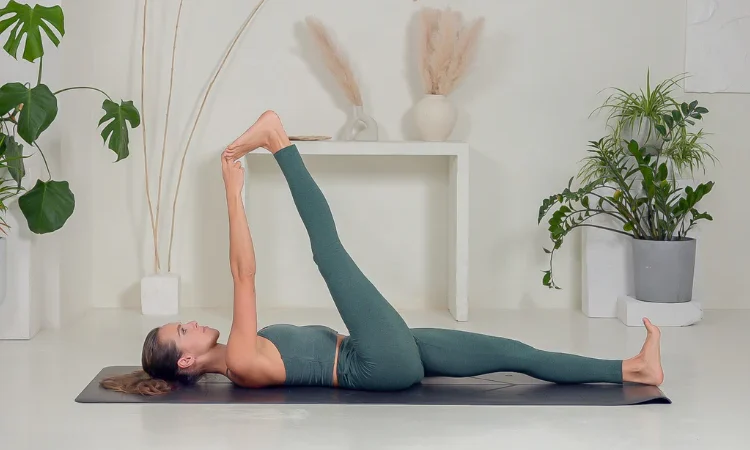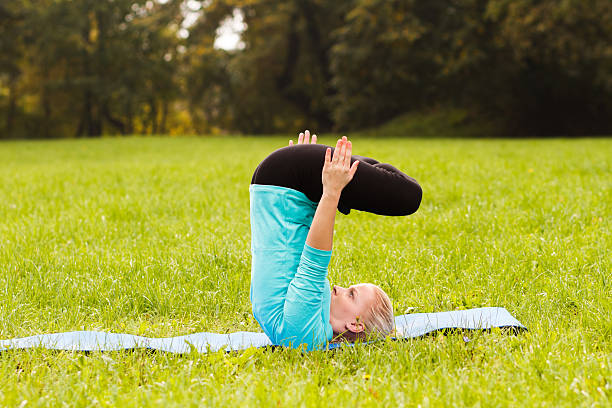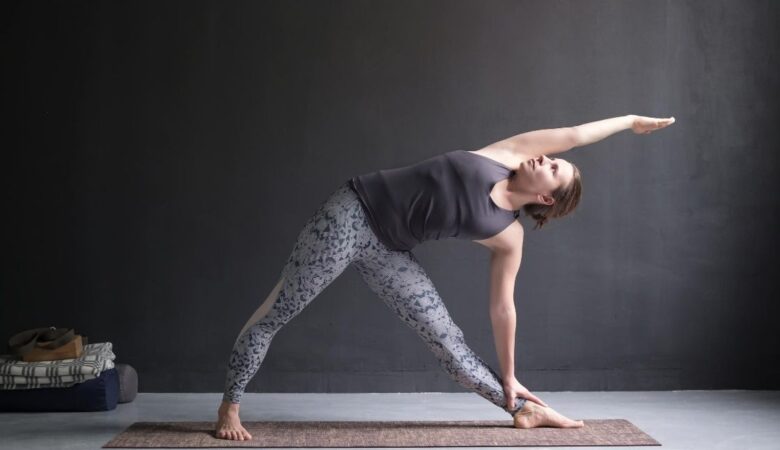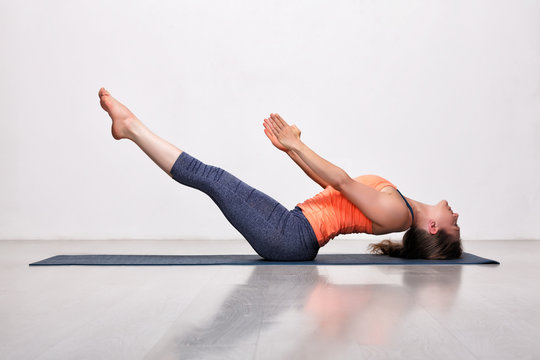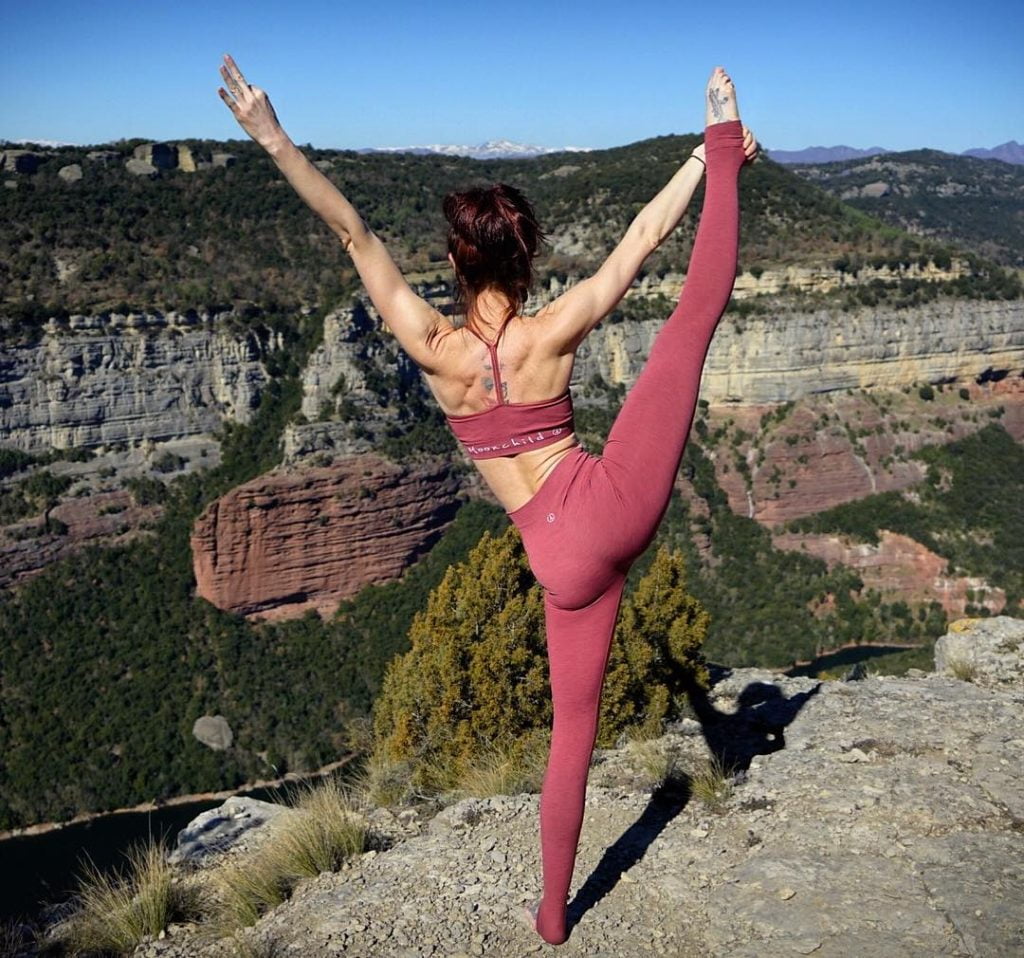
Sanskrit Name: Utthita Hasta Padangusthasana (उत्थित हस्त पादंगुष्ठासन) / Utthita Padangusthasana (उत्थित पादंगुष्ठासन)
English Name: Extended Hand To Big Toe Pose / Standing Big Toe Hold
Type of Yoga: Hatha Yoga
Level of Yoga: Advanced / Intermediate
Duration: 30 to 60 seconds or as per your capacity
Target Area: Back of your legs, arms, thighs
Strengthens: Legs, Ankles, Thighs
Utthita Hasta Padangusthasana (Extended Hand To Big Toe Pose) increases the strength of your legs as well as helps to stretch your thigh’s muscles. Regular practice of this asana tones the legs stretches the ankles and increases the overall body balance. Let’s now know in detail about this asana below.
In the diseased lifestyle of the present time, the most need is to take time for one’s own health and to keep a distance from diseases. For this, nothing can be better than yoga. There are many types of asanas in yoga and in this link, the method, and benefits of the posture that we are going to tell you today are Utthita Hasta Padangusthasana. Utthita Hasta Padangusthasana is a standing posture, which balances the body. It also improves concentration. It is also helpful in increasing stability.
Table of Contents
What Does It Mean By Utthita Hasta Padangusthasana?
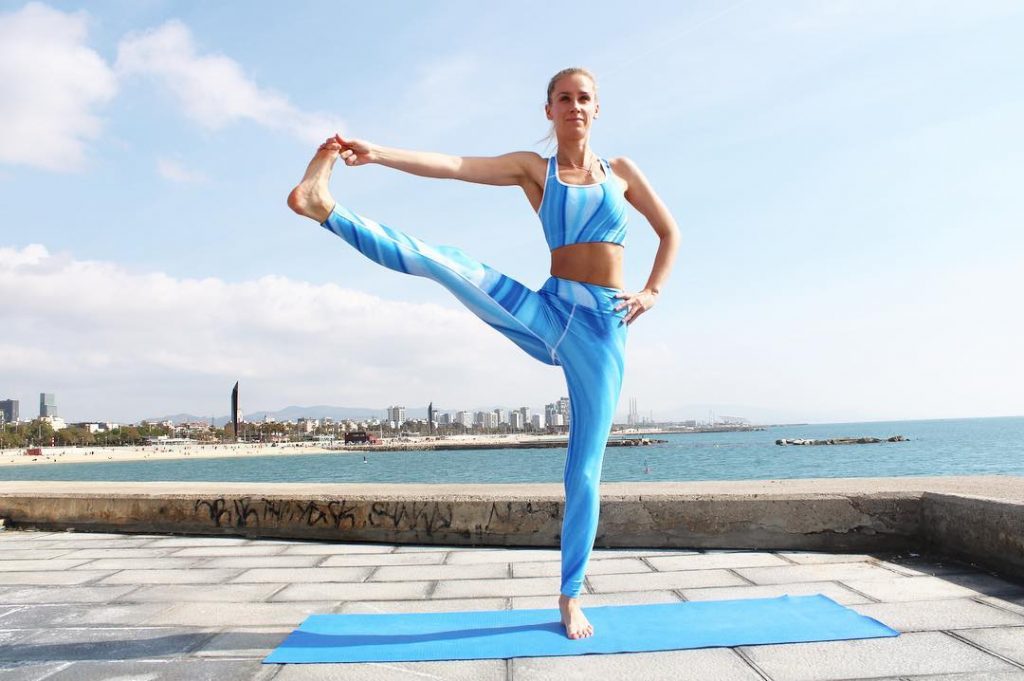
The word Utthita Hasta Padangusthasana is composed of 5 Sanskrit language word, where
The first word is “Utthita (उत्थित)”, which means “Extended”
Then the second word is “Hasta (हस्त)”, which means “Hand”
The third word is “Pada (पद)”, which means “Leg”
Then the fourth word is “Angustha (अंगुष्ठ)” which means “Toe”
Finally, the fifth word is “Asana (आसन)”, which means “Yoga Pose”
Let’s now check out the preparatory poses, method, beginner’s tips, follow-up poses, precautions and benefits of this Utthita Hasta Padangusthasana (Extended Hand Big Toe Pose) below:
Preparatory Pose of Utthita Hasta Padangusthasana:
- Parivrtta Parsvakonasana (परिवृत्त पार्श्वकोणासन) or Revolved Side Angle Pose
- Utthita Parsvakonasana (उत्थित पार्श्वकोणासन) or Extended Angle Pose
- Parivrtta Trikonasana (परिवृत्त त्रिकोणासन) or Revolved Triangle Pose
- Utthita Trikonasana (उत्थित त्रिकोणासन) or Extended Triangle Pose
- Parsvottanasana (पर्श्वोत्तनासन) or Intense Side Stretch Pose
- Prasarita Padottanasana (प्रसारित पादोत्तासन) or Wide-Legged Forward Bend
Method Of Doing Utthita Hasta Padangusthasana:
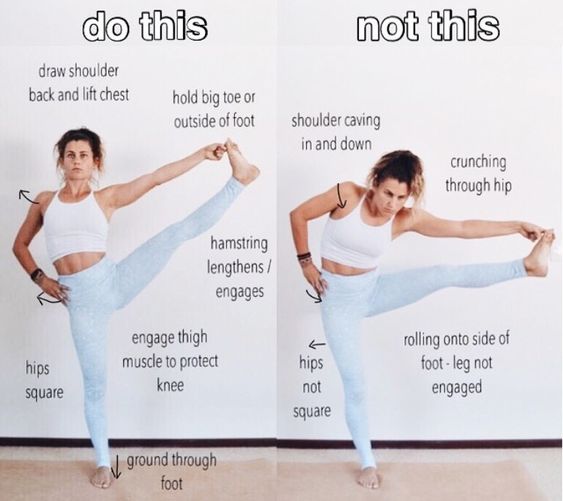
- At the first stand in Tadasana or Mountain Pose
- Take the breath in and take your left leg near to your stomach
- In this posture, you will get a stretch on your left hip (Make your balance before making the next step)
- Keep the focus on your right leg to maintain balance
- Now keep your right hand on the waist
- Then hold the left foot’s big toe right from the left hand and raise the left leg forward
- The leg should completely be straight and raise it as much as possible
- Keep in mind that according to your ability, if the leg is not straight, let it be folded a little
- If possible then try to place your head on your knee
- After doing this, breathe five times in this posture then lift the head while taking an inhalation
- If it is not possible to touch the head on the left knee, then just bow down to the ground and look at the ground
- Take five breaths inside and out, and then lift the head
- You can stay in the asana for 30 to 60 seconds
- Gradually, such as strength and flexibility in your body, you can increase the time – do not exceed 90 seconds
- After breathing 5 times you can come out of this posture
- Take the left leg down to finish the asana, lower both hands down and finish in Tadasana.
- After practicing it on the left side, practice all the steps on the right side too.
Beginner’s Tips:
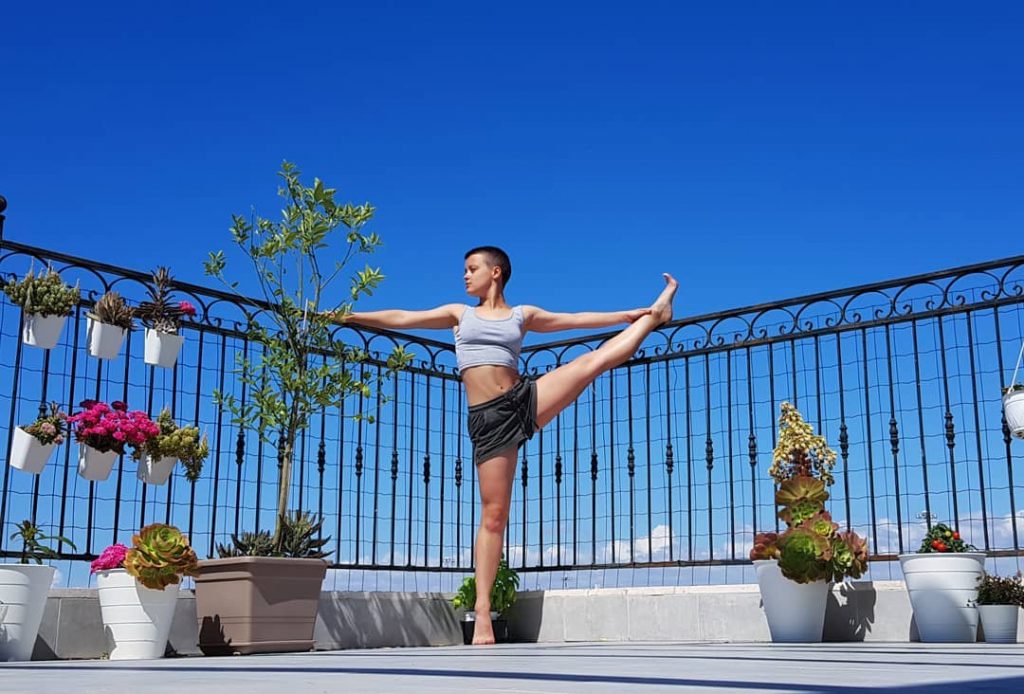
It is difficult to maintain balance in this seat. If you have difficulty in maintaining balance then you can take the support of a wall by placing your one hand on the wall
If your hamstrings are low in a stretch, then fold your extended leg on the knee, or tie a strap on your toe and hold it, this will lessen your hamstring.
For beginners, it is always better to take yoga teacher’s advice before start doing any yoga pose
Follow-up Poses of Utthita Hasta Padangusthasana:
- Ardha Baddha Padmottanasana (अर्ध बद्ध पद्मोत्तासन) or Half Bound Lotus Standing Forward Bend
- Utkatasana (उत्कटासन) or Chair Pose
- Virabhadrasana 1 (वीरभद्रासन 1) or Warrior Pose 1
- Virabhadrasana 2 (वीरभद्रासन 2) or Warrior Pose 2
Precautions of Utthita Hasta Padangusthasana:

Those who have trouble in the lower part of the back do not do the Utthita Hasta Padangusthasana (Extended Hand Big Toe Pose).
Those who have pain in the ankles, they should not do Utthita Hasta Padangusthasana (Extended Hand Big Toe Pose)
Do not put too much emphasis on your physical capacity while practicing Utthita Hasta Padangusthasana (Extended Hand Big Toe Pose)
Benefits of Utthita Hasta Padangusthasana:
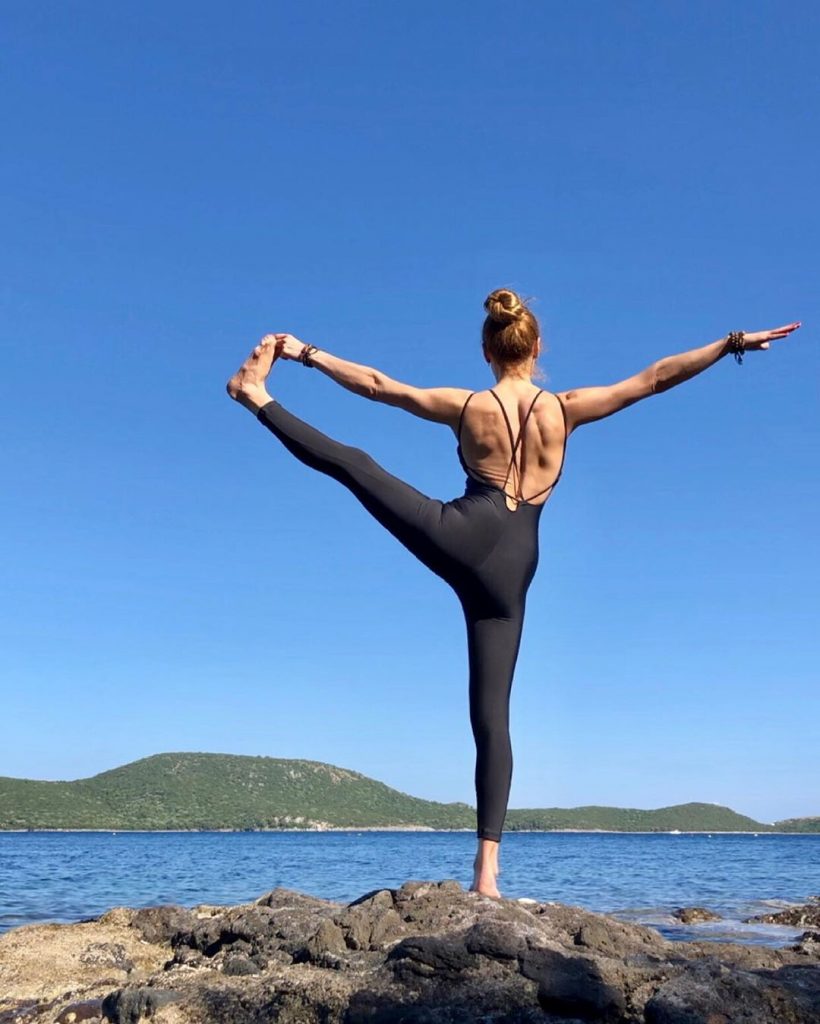
- The leg you pick up, which brings particularly good exposure to the hamstrings of the leg and the hip thus this asana is helpful for hamstrings or the back thigh muscles
- With the practice of Utthita Hasta Padangusthasana (Extended Hand Big Toe Pose) there is a good stretch in legs, knees, and ankles and thus makes them strong
- This makes it particularly strong for the leg you stand on
- Enhances your physical balance
- This asana improves core strength and leg strength
- It perfectly stretches hips, adductors and makes them stronger
- This asana also helps strengthen arm & back muscles with regular practice
- It improves the focus and thus calms the mind. Consequently, it develops better focus and greater concentration
- It strengthens as well as tones your hips and legs.
FAQ:
Q. What does it mean by Utthita Hasta Padangusthasana?
A. The word Utthita Hasta Padangusthasana is composed of 5 Sanskrit language word, where
- The first word is “Utthita (उत्थित)”, which means “Extended”
- Then the second word is “Hasta (हस्त)”, which means “Hand”
- The third word is “Pada (पद)”, which means “Leg”
- Then the fourth word is “Angustha (अंगुष्ठ)” which means “Toe”
- Finally, the fifth word is “Asana (आसन)”, which means “Yoga Pose”
Q. Is Utthita Hasta Padangusthasana really helpful?
A. In Utthita Hasta Padangusthasana, maintaining a solid grounding helps you to keep you stable. his asana requires an arrangement of flexibility, balance, and strength.
Q. What are the Preparatory poses of Utthita Hasta Padangusthasana?
A. The preparatory poses of Utthita Hasta Padangusthasana are as follow:
-
- Parivrtta Parsvakonasana (परिवृत्त पार्श्वकोणासन) or Revolved Side Angle Pose
- Utthita Parsvakonasana (उत्थित पार्श्वकोणासन) or Extended Angle Pose
- Parivrtta Trikonasana (परिवृत्त त्रिकोणासन) or Revolved Triangle Pose
- Utthita Trikonasana (उत्थित त्रिकोणासन) or Extended Triangle Pose
- Parsvottanasana (पर्श्वोत्तनासन) or Intense Side Stretch Pose
- Prasarita Padottanasana (प्रसारित पादोत्तासन) or Wide-Legged Forward Bend
Q. What are the follow-up poses of Utthita Hasta Padangusthasana?
A. The follow-up poses of the Utthita Hasta Padangusthasana are as follow:
Q. What are the Benefits of Utthita Hasta Padangusthasana?
A. With the practice of “Extended Hand Big Toe Pose” there is a good stretch in legs, knees, and ankles and thus makes them strong. There are also other benefits to it. Let’s know in details about it here

